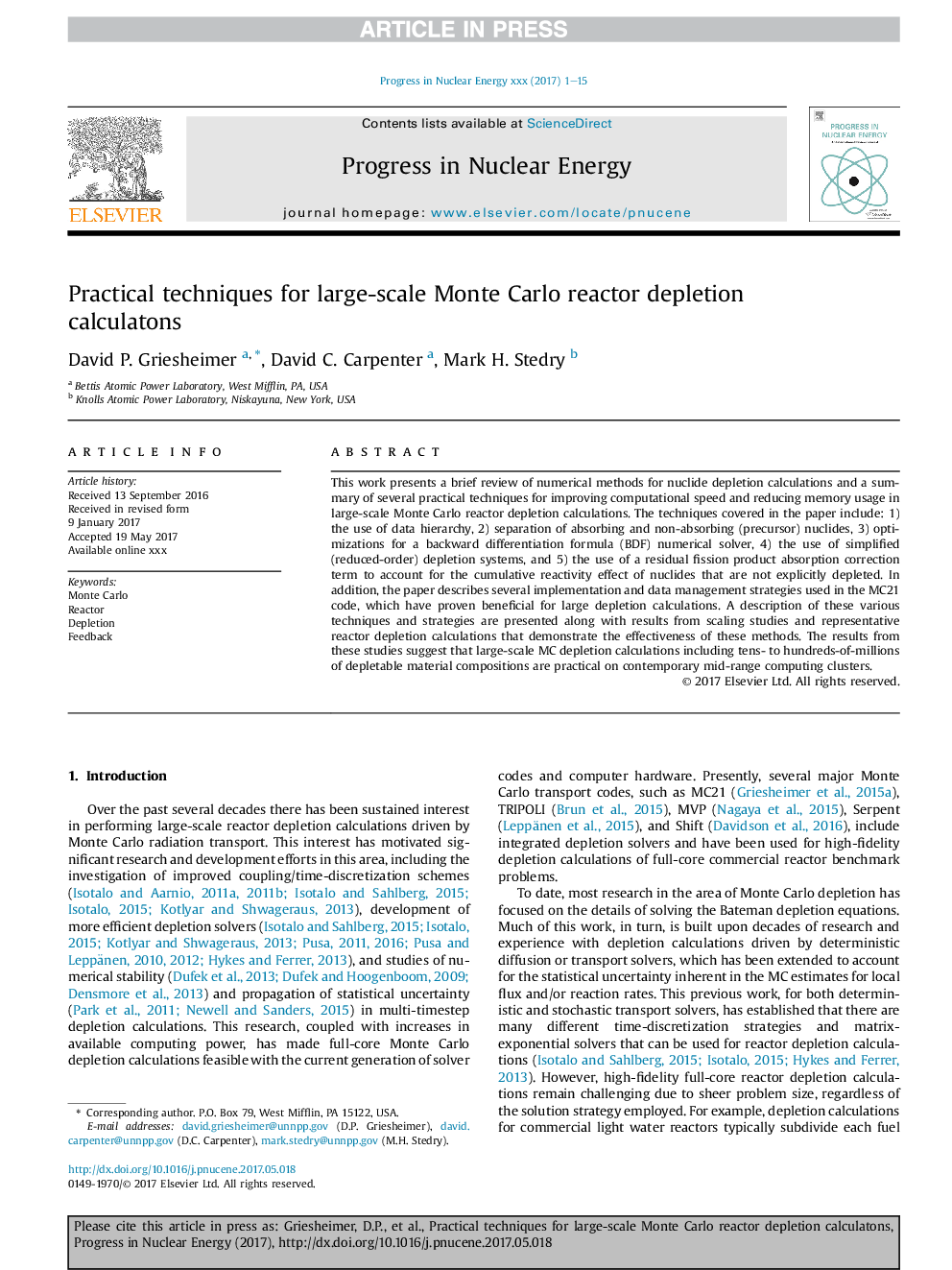| Article ID | Journal | Published Year | Pages | File Type |
|---|---|---|---|---|
| 8084627 | Progress in Nuclear Energy | 2017 | 15 Pages |
Abstract
This work presents a brief review of numerical methods for nuclide depletion calculations and a summary of several practical techniques for improving computational speed and reducing memory usage in large-scale Monte Carlo reactor depletion calculations. The techniques covered in the paper include: 1) the use of data hierarchy, 2) separation of absorbing and non-absorbing (precursor) nuclides, 3) optimizations for a backward differentiation formula (BDF) numerical solver, 4) the use of simplified (reduced-order) depletion systems, and 5) the use of a residual fission product absorption correction term to account for the cumulative reactivity effect of nuclides that are not explicitly depleted. In addition, the paper describes several implementation and data management strategies used in the MC21 code, which have proven beneficial for large depletion calculations. A description of these various techniques and strategies are presented along with results from scaling studies and representative reactor depletion calculations that demonstrate the effectiveness of these methods. The results from these studies suggest that large-scale MC depletion calculations including tens- to hundreds-of-millions of depletable material compositions are practical on contemporary mid-range computing clusters.
Keywords
Related Topics
Physical Sciences and Engineering
Energy
Energy Engineering and Power Technology
Authors
David P. Griesheimer, David C. Carpenter, Mark H. Stedry,
